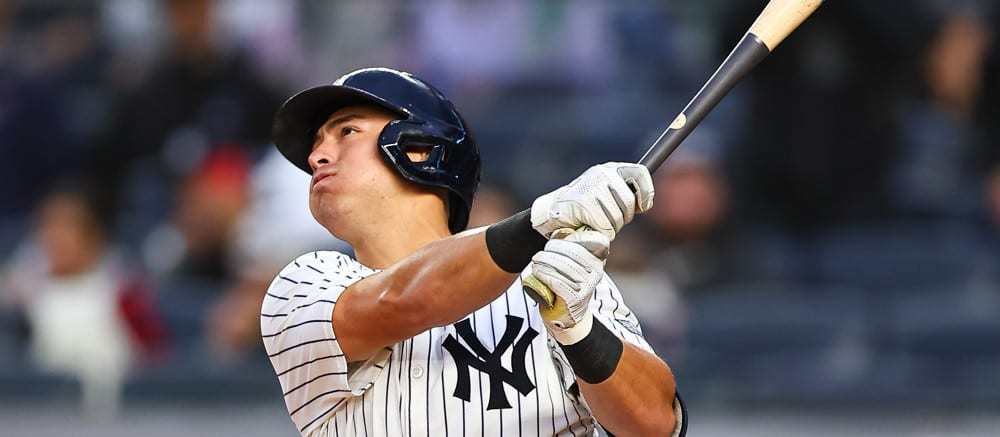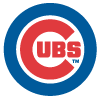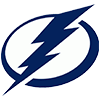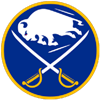We've entered the part of the year where the leaderboards already look quite recognizable in many categories. The top three in WAR according to FanGraphs? Mookie Betts, Jose Altuve and Juan Soto. Top in homers? Mike Trout and Marcell Ozuna. Top in steals? Brice Turang, with Ronald Acuna and Corbin Carroll among those who trail him by just one.
Seeing the leaderboards full of players who look like they belong there can mislead us into thinking that stats all across the league are more real than they actually are. In reality, we're barely more than 10 percent of the way in, and this time last year, Matt Chapman led the league in fWAR while Patrick Wisdom was the co-leader in home runs.
Chapman had 1.4 WAR on this date last season but produced just 1.6 WAR the rest of the way, a reminder that sometimes a hot start is just a hot start. And it wasn't just that he merely had a BABIP-aided first three weeks. He'd also cut his strikeout rate to 21.1 percent, hinting that he was perhaps a new man at the plate. The rest of the season, however, he struck out at a much more Chapmanesque 29.5 percent clip while struggling to a .215/.311/.374 slash line.
Chapman's 2023 season is a reminder that even if we remain disciplined and only react to players whose change in results in matched by a change in underlying numbers, we're still going to get quite a
We've entered the part of the year where the leaderboards already look quite recognizable in many categories. The top three in WAR according to FanGraphs? Mookie Betts, Jose Altuve and Juan Soto. Top in homers? Mike Trout and Marcell Ozuna. Top in steals? Brice Turang, with Ronald Acuna and Corbin Carroll among those who trail him by just one.
Seeing the leaderboards full of players who look like they belong there can mislead us into thinking that stats all across the league are more real than they actually are. In reality, we're barely more than 10 percent of the way in, and this time last year, Matt Chapman led the league in fWAR while Patrick Wisdom was the co-leader in home runs.
Chapman had 1.4 WAR on this date last season but produced just 1.6 WAR the rest of the way, a reminder that sometimes a hot start is just a hot start. And it wasn't just that he merely had a BABIP-aided first three weeks. He'd also cut his strikeout rate to 21.1 percent, hinting that he was perhaps a new man at the plate. The rest of the season, however, he struck out at a much more Chapmanesque 29.5 percent clip while struggling to a .215/.311/.374 slash line.
Chapman's 2023 season is a reminder that even if we remain disciplined and only react to players whose change in results in matched by a change in underlying numbers, we're still going to get quite a lot wrong at this early stage. Those underlying numbers explain how a player earned his results thus far, but they offer no guarantees that those results will continue, as the underlying numbers could easily revert to their previous levels.
Still, the fact that uncertainty is everywhere doesn't mean we need to abandon good decision-making processes. We'd still much prefer a player who looks like he's deserved his results thus far, as while that may not offer guarantees of future success, it's certainly better than the alternative. This week's article will be full of players whose results and process are trending in the same direction this season, just make sure not to get too ahead of yourself and assume that any gains made by these players thus far are guaranteed to be permanent.
Risers
 Anthony Volpe, SS, Yankees: Volpe has gone 1-for-13 over his last three games, making him a slightly awkward inclusion here, but his performance to start the year very much merits "riser" treatment, as he's still hitting .324/.410/.471 with a pair of homers and six steals even after mini-slump. A brief correction was bound to come at some point, as his BABIP still sits at an unsustainable .385, but pretty much everything else going on under the hood is encouraging. Volpe is chasing less often than he did as a rookie and is making more contact, leading to an uptick in walks and a downturn in strikeouts:
Anthony Volpe, SS, Yankees: Volpe has gone 1-for-13 over his last three games, making him a slightly awkward inclusion here, but his performance to start the year very much merits "riser" treatment, as he's still hitting .324/.410/.471 with a pair of homers and six steals even after mini-slump. A brief correction was bound to come at some point, as his BABIP still sits at an unsustainable .385, but pretty much everything else going on under the hood is encouraging. Volpe is chasing less often than he did as a rookie and is making more contact, leading to an uptick in walks and a downturn in strikeouts:
| Year | O-Swing% | Contact% | BB% | K% |
|---|---|---|---|---|
| 2023 | 27.6% | 73.4% | 8.7% | 27.8% |
| 2024 | 22.5% | 87.2% | 12.7% | 17.7% |
These changes in Volpe's approach have been paired with an attempt to change his swing, as he's looking to level off his bat path and make more contact. (Volpe's new mechanics and the motivation behind them are detailed in this article by Esteban Rivera at FanGraphs.) It's an interesting development for a player whose decision to overhaul his swing as a prospect and add more loft put him on the map in the first place, and his big drop in flyball rate (from 37.1 percent to 25.9 percent) raises concerns that his power could dry up this year. It's something to watch, but if his homers go down slightly while his contact and steals go up, most fantasy managers will be more than happy with the tradeoff.
 Colton Cowser, OF, Orioles: I'll get the caveats out of the way first before I get carried away: Cowser's hot start has been over just 49 plate appearances, and it comes with a 30.6 percent strikeout rate. We have to start with those negatives, because otherwise we'll see his .400/.429/.800 slash line and start thinking irresponsible things. Contact is a known hole in Cowser's game, and his 25.9 percent strikeout rate throughout his time in the minors was indeed elevated, but the thought is that he'll do so much of everything else that it won't hold him back. So far this year, that's been the case. He's hit four homers while managing a 51.6 percent hard-hit rate and a 16.1 percent barrel rate. He's also shown off his speed by stealing three bases. Cowser was considered quite a high-potential prospect, but his role on the Orioles' roster initially seemed small, as he started just two of the team's first nine games. He's since started nine in a row, however, and it's hard to see the Orioles sitting a youngster with his potential and returning the capable but unremarkable Austin Hays to regular playing time any time soon. It's still possible Cowser cedes at-bats to Hays against lefties, but he's started against the only southpaw the Orioles have faced since his run of starts began.
Colton Cowser, OF, Orioles: I'll get the caveats out of the way first before I get carried away: Cowser's hot start has been over just 49 plate appearances, and it comes with a 30.6 percent strikeout rate. We have to start with those negatives, because otherwise we'll see his .400/.429/.800 slash line and start thinking irresponsible things. Contact is a known hole in Cowser's game, and his 25.9 percent strikeout rate throughout his time in the minors was indeed elevated, but the thought is that he'll do so much of everything else that it won't hold him back. So far this year, that's been the case. He's hit four homers while managing a 51.6 percent hard-hit rate and a 16.1 percent barrel rate. He's also shown off his speed by stealing three bases. Cowser was considered quite a high-potential prospect, but his role on the Orioles' roster initially seemed small, as he started just two of the team's first nine games. He's since started nine in a row, however, and it's hard to see the Orioles sitting a youngster with his potential and returning the capable but unremarkable Austin Hays to regular playing time any time soon. It's still possible Cowser cedes at-bats to Hays against lefties, but he's started against the only southpaw the Orioles have faced since his run of starts began.
 Kirby Yates, RP, Rangers: If you faded Jose Leclerc during draft season because he's never been reliable enough to hold down the ninth inning for very long and grabbed the late-thirties reliever with closing experience the Rangers signed over the winter instead, I was right there with you. But the late-thirties reliever who fit that description who was foremost in most people's minds (including mine) during draft season was David Robertson. Robertson has done nothing wrong this season, with a 10:4 K:BB and a 1.69 ERA in 10 appearances, but that hasn't earned him the first chance to replace Leclerc, who's already pitched his way out of the job. That opportunity has instead gone to Yates, the other late-thirties reliever with closing experience the team signed this offseason. The 37-year-old has been outstanding this season, striking out 10 in 8.2 scoreless innings while allowing just two hits and two walks. He's also earned a pair of saves this week and seems to have a pretty clear hold on the job. This isn't out of nowhere, either, as he recorded a 2.53 ERA and 35.4 percent strikeout rate over the prior six seasons, albeit with a large chunk of that lost due to elbow injuries.
Kirby Yates, RP, Rangers: If you faded Jose Leclerc during draft season because he's never been reliable enough to hold down the ninth inning for very long and grabbed the late-thirties reliever with closing experience the Rangers signed over the winter instead, I was right there with you. But the late-thirties reliever who fit that description who was foremost in most people's minds (including mine) during draft season was David Robertson. Robertson has done nothing wrong this season, with a 10:4 K:BB and a 1.69 ERA in 10 appearances, but that hasn't earned him the first chance to replace Leclerc, who's already pitched his way out of the job. That opportunity has instead gone to Yates, the other late-thirties reliever with closing experience the team signed this offseason. The 37-year-old has been outstanding this season, striking out 10 in 8.2 scoreless innings while allowing just two hits and two walks. He's also earned a pair of saves this week and seems to have a pretty clear hold on the job. This isn't out of nowhere, either, as he recorded a 2.53 ERA and 35.4 percent strikeout rate over the prior six seasons, albeit with a large chunk of that lost due to elbow injuries.
 Freddy Peralta, SP, Brewers: Who's the best (healthy)` pitcher in baseball right now? Preseason favorites Spencer Strider and Gerrit Cole are out of the picture due to elbow injuries, and a number of supposed aces aren't looking quite ace-like just yet. If there was a memo that no frontline starter is allowed to be healthy and effective this year, though, Peralta didn't get it. Through three starts, the Brewers righty has struck out 39.4 percent of the batters he's faced while walking just 3.0 percent. The result has been a 2.55 ERA and 0.68 WHIP, with Peralta's 1.82 SIERA indicating that he's earned every bit of his strong start and then some. One thing to watch going forward will be Peralta's workload. Will he be asked to pitch deeper into games now that he's the team's ace, with Corbin Burnes now in Baltimore? So far, Peralta has gone 5.2 innings once and 6.0 innings twice. Only twice in 30 starts last year did he record more than 18 outs, leading to a relatively modest innings total (165.2). If he pushes towards 180-200 innings this season without losing too much effectiveness, his elite ratios and strikeout numbers will result in even more fantasy value, and at least an outside shot at the top spot overall by season's end.
Freddy Peralta, SP, Brewers: Who's the best (healthy)` pitcher in baseball right now? Preseason favorites Spencer Strider and Gerrit Cole are out of the picture due to elbow injuries, and a number of supposed aces aren't looking quite ace-like just yet. If there was a memo that no frontline starter is allowed to be healthy and effective this year, though, Peralta didn't get it. Through three starts, the Brewers righty has struck out 39.4 percent of the batters he's faced while walking just 3.0 percent. The result has been a 2.55 ERA and 0.68 WHIP, with Peralta's 1.82 SIERA indicating that he's earned every bit of his strong start and then some. One thing to watch going forward will be Peralta's workload. Will he be asked to pitch deeper into games now that he's the team's ace, with Corbin Burnes now in Baltimore? So far, Peralta has gone 5.2 innings once and 6.0 innings twice. Only twice in 30 starts last year did he record more than 18 outs, leading to a relatively modest innings total (165.2). If he pushes towards 180-200 innings this season without losing too much effectiveness, his elite ratios and strikeout numbers will result in even more fantasy value, and at least an outside shot at the top spot overall by season's end.
 Jared Jones, SP, Pirates: Pitchers can reach a new level without warning, and that seems to be happening to Jones this season. The 22-year-old righty was certainly a prospect, but hardly an elite one, sitting in the back half of most top-100s this past winter. Jones struck out 28.7 percent of the batters he faced as a minor leaguer, but his 9.9 percent walk rate raised concerns that he might not have the control to be a frontline starter and could need to move to the bullpen to find success. He's only made four major-league starts thus far, but I think we can retire that notion. He owns a 3.13 ERA and 0.78 WHIP, and his 2.00 SIERA indicates that his results could even be significantly better. He's struck out 36.4 percent of opposing batters while walking just 2.3 percent; in other words, he's striking out batters as often as Spencer Strider and walking them as rarely as George Kirby. Jones' overpowering fastball-slider combo has already drawn plenty of comparisons to Strider himself, and while that may raise questions about his future durability, it also shows just how high his ceiling could be right away. Jones was pulled after just 59 pitches (50 of them strikes) in his latest outing against the Mets on Tuesday, but that's because the Pirates went into the start with a five-inning limit planned for him and stuck with the plan even though he was so efficient that he didn't run up a high pitch count. (Why they're measuring by innings and not pitches is beyond me.) Expect more annoyingly truncated outings going forward, but Jones' performance in those outings already looks like it could be elite.
Jared Jones, SP, Pirates: Pitchers can reach a new level without warning, and that seems to be happening to Jones this season. The 22-year-old righty was certainly a prospect, but hardly an elite one, sitting in the back half of most top-100s this past winter. Jones struck out 28.7 percent of the batters he faced as a minor leaguer, but his 9.9 percent walk rate raised concerns that he might not have the control to be a frontline starter and could need to move to the bullpen to find success. He's only made four major-league starts thus far, but I think we can retire that notion. He owns a 3.13 ERA and 0.78 WHIP, and his 2.00 SIERA indicates that his results could even be significantly better. He's struck out 36.4 percent of opposing batters while walking just 2.3 percent; in other words, he's striking out batters as often as Spencer Strider and walking them as rarely as George Kirby. Jones' overpowering fastball-slider combo has already drawn plenty of comparisons to Strider himself, and while that may raise questions about his future durability, it also shows just how high his ceiling could be right away. Jones was pulled after just 59 pitches (50 of them strikes) in his latest outing against the Mets on Tuesday, but that's because the Pirates went into the start with a five-inning limit planned for him and stuck with the plan even though he was so efficient that he didn't run up a high pitch count. (Why they're measuring by innings and not pitches is beyond me.) Expect more annoyingly truncated outings going forward, but Jones' performance in those outings already looks like it could be elite.
 Cristopher Sanchez, SP, Phillies: Sanchez had all the ingredients to be the perfect sleeper this past winter. He had good results last year (3.44 ERA, 1.05 WHIP) which were backed by more advanced stats (3.09 xFIP, 3.33 SIERA), but they came in a small enough sample (99.1 innings) to keep the hype somewhat muted, especially given that Sanchez wasn't an especially highly-touted prospect and owned a 5.47 ERA in 52.2 innings as a swingman prior to last season. Through four starts, it appears the hype didn't go nearly far enough. His 1.31 WHIP is elevated slightly due to a .339 BABIP, but that comes with a stellar 2.53 ERA, and after his 10-strikeout performance against the Rockies on Wednesday, he now owns a 27.2 percent strikeout rate, an improvement on his already above-average 24.2 percent strikeout rate from last season. Sanchez has also improved his groundball rate, which has gone from an excellent 57.0 percent to a league-leading 62.7 percent. The only minor nit to pick is that his walk rate has jumped from an elite 4.0 percent to a roughly average 8.7 percent. But that's exactly why a pitcher who's above-average in whiffs, strike-throwing and keeping the ball on the ground is so exciting; if one backs up, he'll still have the other two. And if the sinkerballer adds last year's command back into the mix, watch out.
Cristopher Sanchez, SP, Phillies: Sanchez had all the ingredients to be the perfect sleeper this past winter. He had good results last year (3.44 ERA, 1.05 WHIP) which were backed by more advanced stats (3.09 xFIP, 3.33 SIERA), but they came in a small enough sample (99.1 innings) to keep the hype somewhat muted, especially given that Sanchez wasn't an especially highly-touted prospect and owned a 5.47 ERA in 52.2 innings as a swingman prior to last season. Through four starts, it appears the hype didn't go nearly far enough. His 1.31 WHIP is elevated slightly due to a .339 BABIP, but that comes with a stellar 2.53 ERA, and after his 10-strikeout performance against the Rockies on Wednesday, he now owns a 27.2 percent strikeout rate, an improvement on his already above-average 24.2 percent strikeout rate from last season. Sanchez has also improved his groundball rate, which has gone from an excellent 57.0 percent to a league-leading 62.7 percent. The only minor nit to pick is that his walk rate has jumped from an elite 4.0 percent to a roughly average 8.7 percent. But that's exactly why a pitcher who's above-average in whiffs, strike-throwing and keeping the ball on the ground is so exciting; if one backs up, he'll still have the other two. And if the sinkerballer adds last year's command back into the mix, watch out.
Fallers
 Andres Munoz, RP, Mariners: The extent to which Munoz is a faller depends on your expectations for how the Mariners would manage their bullpen heading into the season. If you drafted Munoz, you presumably thought he was so good that he would be able to convince manager Scott Servais to abandon his modern, leverage-based approach and revert to something more traditional. If you thought that was unlikely, you probably didn't draft him and thus were relatively unfazed by the fact that he's recorded just one of the team's last four saves, with Ryne Stanek earning two and Tayler Saucedo earning one. Saucedo's was a one-out save which occurred after Stanek failed to finish off the ninth inning on Tuesday. That could lead to suggestions that Munoz has lost the closer role to Stanek, but it's much more likely that there was no closer job in the first place. It's hard to say Munoz has pitched his way out of a job, even if his small-sample 19.4 percent walk rate is quite poor. He's striking out 35.5 percent of opposing batters and has a 2.45 ERA. He's just being used in high-leverage situations earlier in games when needed, something which happened in the past in Seattle and will continue to happen in the future. If you expected 30 saves from Munoz, you might want to think about cutting that number in half.
Andres Munoz, RP, Mariners: The extent to which Munoz is a faller depends on your expectations for how the Mariners would manage their bullpen heading into the season. If you drafted Munoz, you presumably thought he was so good that he would be able to convince manager Scott Servais to abandon his modern, leverage-based approach and revert to something more traditional. If you thought that was unlikely, you probably didn't draft him and thus were relatively unfazed by the fact that he's recorded just one of the team's last four saves, with Ryne Stanek earning two and Tayler Saucedo earning one. Saucedo's was a one-out save which occurred after Stanek failed to finish off the ninth inning on Tuesday. That could lead to suggestions that Munoz has lost the closer role to Stanek, but it's much more likely that there was no closer job in the first place. It's hard to say Munoz has pitched his way out of a job, even if his small-sample 19.4 percent walk rate is quite poor. He's striking out 35.5 percent of opposing batters and has a 2.45 ERA. He's just being used in high-leverage situations earlier in games when needed, something which happened in the past in Seattle and will continue to happen in the future. If you expected 30 saves from Munoz, you might want to think about cutting that number in half.
 Triston McKenzie, SP, Guardians: McKenzie showed promise as a 22-year-old rookie in the shortened 2020 season and then broke out in 2022, managing a 2.92 ERA and 0.95 WHIP across 191.1 innings. Given that trajectory, he ought to be one of the best pitchers in the world right about now, but injuries have sidetracked his career. A shoulder strain in March of 2023 delayed his season debut until June, and he made just two starts before suffering a partially torn UCL in his elbow. He narrowly avoided Tommy John surgery, but it's beginning to look like he perhaps should have undergone the procedure. In his two starts after returning last year, he had a 1:9 K:BB in six innings. Through three starts this year, he has a 5:12 K:BB in 13 frames. Altogether, that's a 6.5 percent strikeout rate and 22.6 percent walk rate since he "successfully" avoided surgery, numbers which make his 6.16 ERA in those outings look almost too good to be true. To top it all off, his fastball velocity, which sat at 92.7 mph in 2022, is just 91.0 mph this year. This does not in any way look like a healthy pitcher, and it's hard to envision a future where McKenzie magically returns to his old self simply by pitching through it at this point.
Triston McKenzie, SP, Guardians: McKenzie showed promise as a 22-year-old rookie in the shortened 2020 season and then broke out in 2022, managing a 2.92 ERA and 0.95 WHIP across 191.1 innings. Given that trajectory, he ought to be one of the best pitchers in the world right about now, but injuries have sidetracked his career. A shoulder strain in March of 2023 delayed his season debut until June, and he made just two starts before suffering a partially torn UCL in his elbow. He narrowly avoided Tommy John surgery, but it's beginning to look like he perhaps should have undergone the procedure. In his two starts after returning last year, he had a 1:9 K:BB in six innings. Through three starts this year, he has a 5:12 K:BB in 13 frames. Altogether, that's a 6.5 percent strikeout rate and 22.6 percent walk rate since he "successfully" avoided surgery, numbers which make his 6.16 ERA in those outings look almost too good to be true. To top it all off, his fastball velocity, which sat at 92.7 mph in 2022, is just 91.0 mph this year. This does not in any way look like a healthy pitcher, and it's hard to envision a future where McKenzie magically returns to his old self simply by pitching through it at this point.
 Nick Castellanos, OF, Phillies: We've seen two different versions of Castellanos this season, neither of them good. In the first three series of the season, he swung at 50.7 percent of pitches he saw, down significantly from his 56.6 percent mark from his first two seasons in Philadelphia, if still above the MLB average of 46.6 percent. That was part of a team-wide effort to chase fewer pitches, with Castellanos swinging at just 35.6 percent of pitches outside the zone, down from 43.1 percent over the previous two years. The results weren't there for him, though, so after hitting .133/.278/.133 in nine games, he seemingly gave the new approach up. Over his last 10 games, his overall swing rate is all the way up at 68.3 percent, while his chase rate has spiked to 51.7 percent. Unfortunately, the uber-aggressive version of Castellanos isn't working either, as he's hit .179/.179/.179 over that stretch. In both samples combined, he's yet to record an extra-base hit, making him the only qualified hitter yet to do so. The 32-year-old's xSLG sits at .233, so it's not as if he's making quality contact and simply getting unlucky. The Phillies are keeping faith with Castellanos for now, starting him in right field in every single game, but don't be surprised if his prolonged early slump starts cutting into his playing time soon.
Nick Castellanos, OF, Phillies: We've seen two different versions of Castellanos this season, neither of them good. In the first three series of the season, he swung at 50.7 percent of pitches he saw, down significantly from his 56.6 percent mark from his first two seasons in Philadelphia, if still above the MLB average of 46.6 percent. That was part of a team-wide effort to chase fewer pitches, with Castellanos swinging at just 35.6 percent of pitches outside the zone, down from 43.1 percent over the previous two years. The results weren't there for him, though, so after hitting .133/.278/.133 in nine games, he seemingly gave the new approach up. Over his last 10 games, his overall swing rate is all the way up at 68.3 percent, while his chase rate has spiked to 51.7 percent. Unfortunately, the uber-aggressive version of Castellanos isn't working either, as he's hit .179/.179/.179 over that stretch. In both samples combined, he's yet to record an extra-base hit, making him the only qualified hitter yet to do so. The 32-year-old's xSLG sits at .233, so it's not as if he's making quality contact and simply getting unlucky. The Phillies are keeping faith with Castellanos for now, starting him in right field in every single game, but don't be surprised if his prolonged early slump starts cutting into his playing time soon.
 Jordan Walker, OF, Cardinals: Walker is no stranger to slow starts. After generating tons of excitement last spring and earning an Opening Day roster spot, he hit a modest .274/.321/.397 in his first 20 games and was sent down before the end of April. Through 17 games this season, he's hitting just .180/.246/.300 and has no homers or steals. Digging deeper, things don't look terrible, as his 26.3 percent strikeout rate is elevated but hardly Gallo-esque, while his 10.8 percent barrel rate is strong. He's pounding the ball into the ground, though, as his 54.1 percent groundball rate would have ranked seventh-highest among qualified batters last year. That's contributed to a poor .343 xSLG, which tells a different story than his barrel rate about the quality of his contact so far. If given the chance, you'd expect a 21-year-old with Walker's prodigious talent to sort things out eventually, bouncing back to something similar to the .277/.346/.455 slash line he produced after he returned to the majors in early June last year. There's some risk he'll have to do his sorting out in the minors for a second straight season, however, as he's sat for two of the last four games. Dylan Carlson (shoulder) and Tommy Edman (wrist) are working their way back but have not yet begun rehab assignments, which should buy Walker at least a little more time to prove that no demotion is needed this season.
Jordan Walker, OF, Cardinals: Walker is no stranger to slow starts. After generating tons of excitement last spring and earning an Opening Day roster spot, he hit a modest .274/.321/.397 in his first 20 games and was sent down before the end of April. Through 17 games this season, he's hitting just .180/.246/.300 and has no homers or steals. Digging deeper, things don't look terrible, as his 26.3 percent strikeout rate is elevated but hardly Gallo-esque, while his 10.8 percent barrel rate is strong. He's pounding the ball into the ground, though, as his 54.1 percent groundball rate would have ranked seventh-highest among qualified batters last year. That's contributed to a poor .343 xSLG, which tells a different story than his barrel rate about the quality of his contact so far. If given the chance, you'd expect a 21-year-old with Walker's prodigious talent to sort things out eventually, bouncing back to something similar to the .277/.346/.455 slash line he produced after he returned to the majors in early June last year. There's some risk he'll have to do his sorting out in the minors for a second straight season, however, as he's sat for two of the last four games. Dylan Carlson (shoulder) and Tommy Edman (wrist) are working their way back but have not yet begun rehab assignments, which should buy Walker at least a little more time to prove that no demotion is needed this season.







































